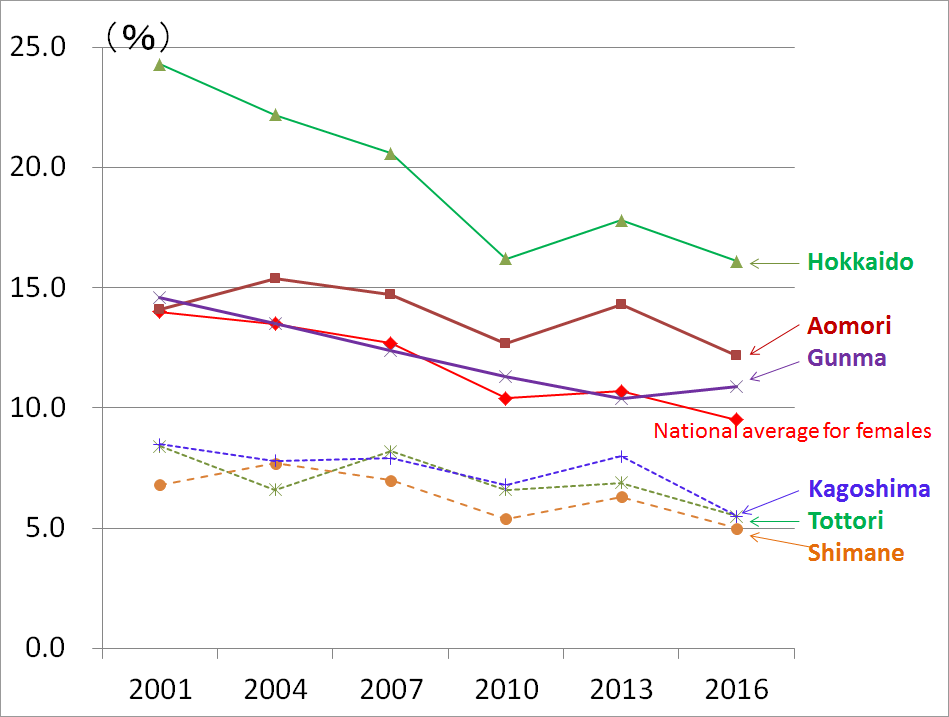Column Finance and the Social Security System 2018.05.28
【Aging, safety net and fiscal crisis in Japan】No.116: Smoking Rate by Prefecture
In Column No.28, I showed the international comparison of smoking rates based on OECD data and the fact that the smoking rate in Japan is relatively high among developed countries. The Ministry of Health, Labour and Welfare regularly release a report on the smoking rate of adults over 20 years old by prefecture and gender in the National Life Basic Survey, every three years.
Figure 1 shows the smoking rate of males. While there are 47 prefectures in Japan, the national average (maximum to minimum) declined sharply from 48.4% (maximum 53.5% to minimum 35.7%) in 2001, to 31.1% (maximum 37.5% to minimum 27.0%) in 2016. However, it is worth noting that there are significant disparities in the declining widths between Saga, Aomori, Iwate, Tokushima, and Nara, of which smoking rates were around 50% as of 2001. This suggests that there are significant disparities in the efforts of prefectural governments to improve lifestyle habits and resident awareness. While the national average (maximum to minimum) of the female smoking rate has also decreased from 14.0% (maximum 24.3% to minimum 6.8%) in 2001 to 9.6% (maximum 16.1% to minimum 5.6%) in 2016, there is still room for improvement (Figure 2).
Figure 1: Smoking rate of males over 20 years old

Source: Ministry of Health, Labour and Welfare
Figure 2: Smoking rate of females over 20 years old

